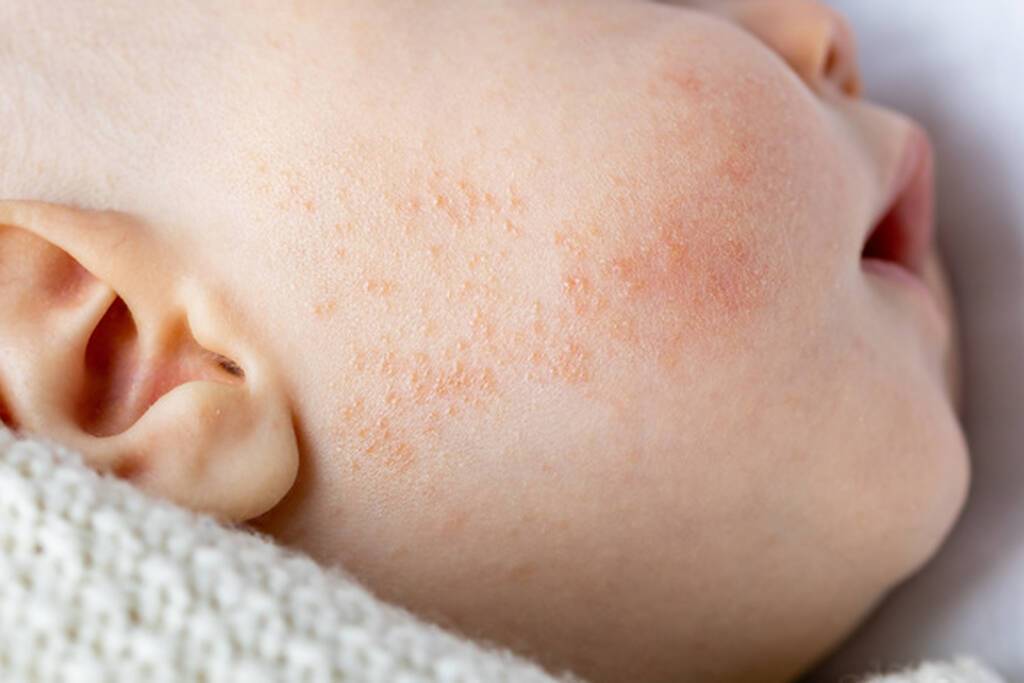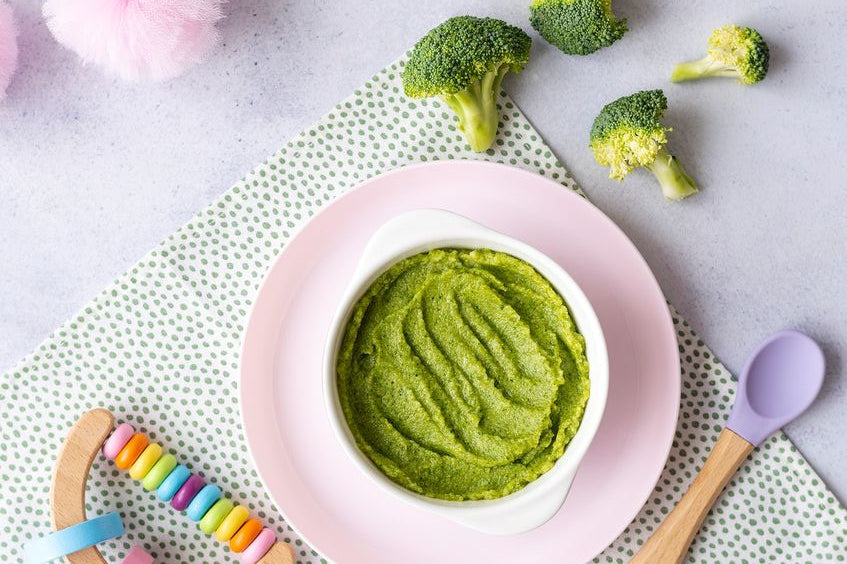
Treating Baby Eczema While Bathing: Solutions and Precautions
Tips for caring for baby's eczema-prone skin while bathing.
Eczema in babies can be a major concern for many parents. This skin condition, characterized by red patches, itching and sometimes oozing, not only affects your child's delicate skin, but can also impact their overall well-being. If you're a parent of a baby with eczema, you know how crucial it is to find effective solutions to alleviate eczema and understand best practices for baby's skin care.
This article aims to guide you through the intricacies of treating childhood eczema, focusing specifically on the importance of bathing babies with eczema. You will discover practical advice for adapting your child's hygiene in order to reduce eczema patches, while preserving the softness and comfort of their skin. Together we'll explore gentle, proven methods to turn bathing into a time of relief and relaxation for your little one, despite the challenges of childhood eczema.

1. What is eczema?
has. Definition :
Eczema, also known as atopic dermatitis, is a chronic inflammatory skin condition , commonly seen in infants and children. This disease is characterized by itchy (itchy) skin and often develops into flare-ups. Although eczema is primarily associated with childhood, it can sometimes continue into adolescence and adulthood.
Atopic dermatitis is not contagious but is often the result of a genetic predisposition to develop allergies (atopy). This increased sensitivity can occur when the skin is exposed to various environmental allergens such as dust mites, animal hair or pollens.
Commonly called infant eczema when it appears in babies, generally from the age of 3 months, this eczema manifests itself in periods of worsening followed by remissions. Although it tends to disappear before adolescence, eczema can persist or reappear later in life, requiring careful and appropriate management to alleviate its symptoms and preserve the child's quality of life.
b. Symptoms of Eczema:
Atopic eczema, or atopic dermatitis, is a dermatological condition that manifests itself in recurring cycles of flare-ups and remissions. Its symptoms, varied and progressive, are particularly notable in infants and children, although they can persist or appear at any age.
During flare-ups, the main symptoms of eczema include:
- Pruritus or itching: In infants, this itching often results in trouble sleeping, restlessness, and rubbing of the cheeks against the sheets. In older children, scratching becomes more intense, which can lead to skin abrasions.
- Skin lesions: Eczema is characterized by skin redness, elevations which give the skin a rough appearance, sometimes accompanied by fine vesicles. These can rupture, leading to oozing, followed by the formation of crusts.
- Dry skin: Outside of areas affected by eczema, baby's skin may be particularly dry.
The location and appearance of eczema lesions vary depending on age:
- In infants (3 months to 2 years): Eczema mainly appears on certain parts of the face (forehead, chin, cheeks) and limbs, generally sparing the nose and buttocks. The folds behind and below the ears, as well as the anterior fold of the neck, are often affected.
- In children over two years old: The lesions take on a thick and whitish appearance, are located more in the folds (neck, elbows, knees, buttocks), hands, wrists and ankles. The skin remains very dry, especially on the hands.
vs. The Causes of Childhood Eczema:
Eczema in infants is usually the result of a combination of genetic and environmental factors . Babies with an “atopic background” are more likely to develop this condition due to their hereditary predisposition to allergies.
- Food and Contact Allergies: In infants, especially those under one year of age, eczema can be triggered by common food allergies like eggs, cow's milk protein, and peanut. Likewise, contact allergies due to dust mites, animal hair, pollen, or even certain toiletries, detergents and fabric softeners can cause eczema flare-ups. It is estimated that around a third of children with moderate to severe atopic eczema also have food allergies.
- Skin Lipid Deficiency: Atopic dermatitis is not an allergy itself, but rather a reaction of the skin, often linked to an inability to produce enough lipids to protect itself properly. This deficiency makes the skin vulnerable to irritants and allergens.
- Environmental and Emotional Factors : In older children, in addition to allergic factors, other elements such as dry skin, skin infections, stress, and irritation caused by certain fabrics (such as wool) or cosmetic products can promote eczema flare-ups.
It is important to note that atopic dermatitis tends to diminish or even disappear with age, often before the age of 3. However, vigilance and adequate management of triggering factors remain essential to minimize symptoms and improve the quality of life of affected children.

2. My baby has eczema, what should I do?
has. Solutions to Reduce/Eliminate Eczema Patches:
When a baby suffers from eczema flare-ups, there are several steps you can take to ease the symptoms and provide relief.
- Treatment with Dermocorticoids: For eczema flare-ups, the application of topical corticosteroids in the form of cream, ointment or lotion is often recommended. It is crucial to begin treatment as soon as the first symptoms appear to quickly relieve your child's discomfort.
- Prevention and Skin Care: Between outbreaks, the use of nourishing and soothing treatments designed especially for infants helps prevent the appearance of new lesions. These products should moisturize and protect dry and sensitive skin.
- Sleep Environment: To promote restful sleep despite eczema, maintain a cool environment in your baby's room. Avoid overheating the room and opt for lukewarm showers or baths before bed. The water should not exceed 35°C, and the bath should not exceed five minutes. Dry baby's skin using delicate dabbing, without rubbing.
- Daily Precautions: Vacuum baby's room regularly and wash soft toys to minimize allergens. Soft, seamless cotton clothing will help reduce skin irritation from friction. Keep baby's nails short to avoid excessive scratching which could worsen the lesions.
- Breastfeeding and Dietary Prevention: For families with a history of allergies, prolonged breastfeeding may be beneficial. Talk to a healthcare professional about feeding options for babies from atopic families and those allergic to cow's milk proteins. Delay dietary diversification to prevent allergic reactions.
If you experience even minor redness or patches, consult a healthcare professional for appropriate recommendations, which may include cortisone creams or antihistamine treatment. These preventive and reactive measures can effectively manage infant eczema, thereby improving your child's comfort and quality of life.

b. Adapting the Daily Hygiene of a Child With Eczema:
Managing eczema in children often involves adjusting their bathing routine to keep the skin well hydrated and minimize irritation.
Here are some tips for adapting daily hygiene:
- Baths and Showers: A daily bath or shower is recommended for children with eczema, as long as you apply a moisturizer immediately afterwards to lock in moisture. Use lukewarm water (around 35°C) and limit the time spent in water to 5-10 minutes. For baths, consider adding a bath oil specifically designed for sensitive skin, which protects the skin from the drying effects of water and provides nourishing lipids.
- Selection of cleaning products: Avoid scented soaps and products which can make eczema worse. Prefer gentle cleansers for sensitive skin, such as a soap-free bar or a superfatted gel adapted to the pH of the skin. These products will help cleanse the skin without drying or irritating it.
- Gentle drying: After bathing or showering, dry the child's skin by gently patting it with a towel instead of rubbing it. A soft towel is best to avoid further irritation.
- Applying moisturizers: Immediately apply a moisturizing cream or balm to lock in moisture in the skin. Emollient treatments are particularly beneficial because they contain moisturizing ingredients and lipids to restore the skin barrier.
- Additional precautions: Maintain a cool environment in the child's room to prevent excessive sweating. Opt for soft, seamless cotton clothing and avoid irritating chafing. Keep the child's nails short to reduce the risk of excessive scratching.
By following these steps, you can help keep your child's skin hydrated, reduce irritation and help reduce the frequency and severity of eczema flare-ups. A well-thought-out bathing routine, combined with the use of suitable products, plays a key role in managing eczema in children.
It's important to remember that every child is unique, and what works for one may not be ideal for another. Listening carefully to your child, observing the signs of eczema, and open communication with your doctor are key to finding the best approach. With patience, attention and the right care, you can help your child live comfortably with eczema and enjoy their first years of life.





Leave a comment
This site is protected by hCaptcha and the hCaptcha Privacy Policy and Terms of Service apply.